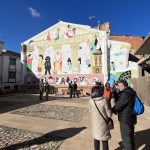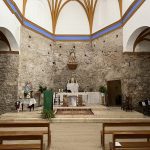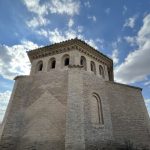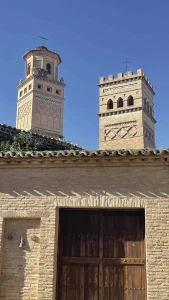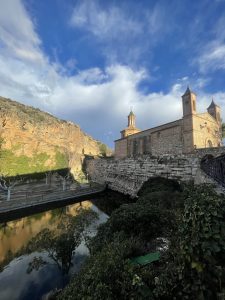

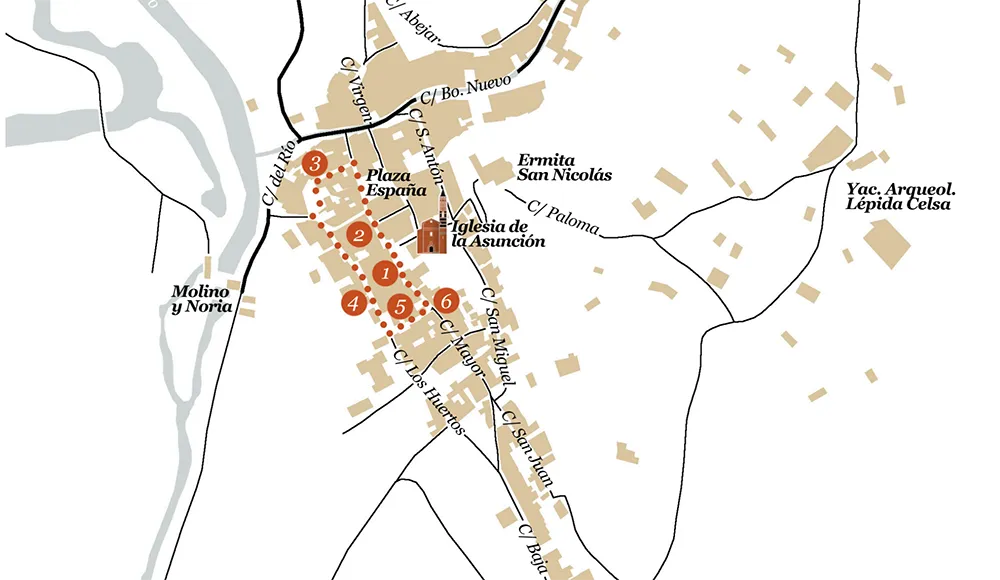
Mudetrad Project


Didactic Mudejar, the guide
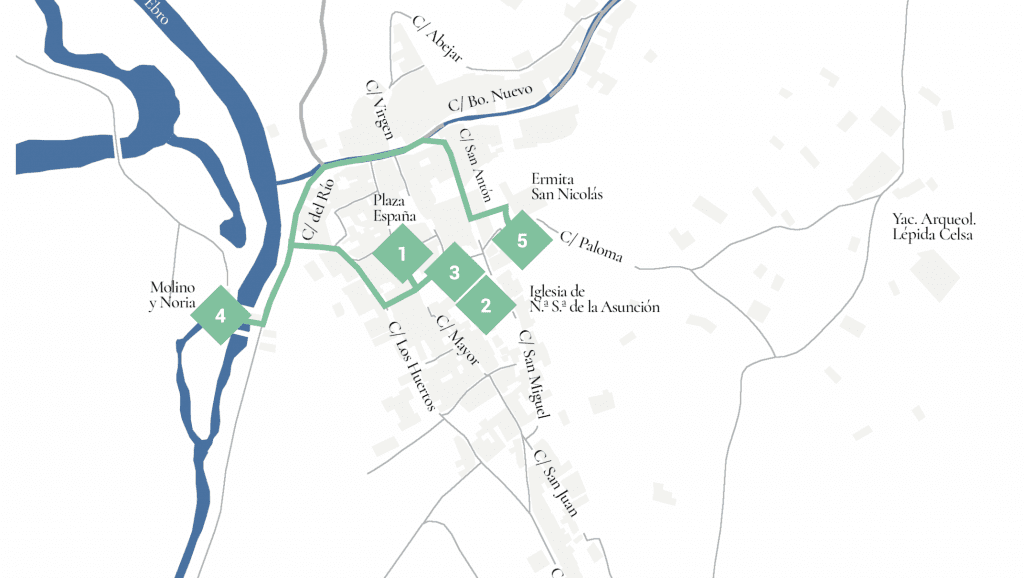
Circular from the rural school
Family Outings

Lepida Celsa
The origins of Velilla de Ebro date back to 44 B.C.: it was in that year that Marcus Emilius Lepidus founded the colony known as “Victiux Iulia Lepida”, thus consolidating control of the Ebro and its passage along the Via Augusta. The colony of Celsa was recognised as one of the most important in the Ebro valley, even minting its own coinage. Around the same time, other colonies of particular importance arose, such as Caesaraugusta, now known as Saragossa. The splendour of Lepida Celsa lasted until the time of Nero.
In the town centre we find a beautiful church from the 16th-17th centuries, of very harmonious proportions, with a single nave with side chapels between the buttresses – in a reform of the 18th century the buttresses were perforated, giving the impression of three naves. The church has a Mudejar typology in terms of its ground plan and the layout of its elements, although it is resolved with Renaissance formal solutions.
The slender Mudejar tower, built in brick and with three sections, stands out. The upper part of the lower body is decorated with bands of staggered or saw-toothed angled bands.
The origins of Velilla de Ebro date back to 44 B.C.: it was in that year that Marcus Emilius Lepidus founded the colony known as “Victiux Iulia Lepida”, thus consolidating control of the Ebro and its passage along the Via Augusta. The colony of Celsa was recognised as one of the most important in the Ebro valley, even minting its own coinage. Around the same time, other colonies of particular importance arose, such as Caesaraugusta, now known as Saragossa. The splendour of Lepida Celsa lasted until the time of Nero.
In the town centre we find a beautiful church from the 16th-17th centuries, of very harmonious proportions, with a single nave with side chapels between the buttresses – in a reform of the 18th century the buttresses were perforated, giving the impression of three naves. The church has a Mudejar typology in terms of its ground plan and the layout of its elements, although it is resolved with Renaissance formal solutions.
The slender Mudejar tower, built in brick and with three sections, stands out. The upper part of the lower body is decorated with bands of staggered or saw-toothed angled bands.
Vega of the river Ebro
Velilla conserves an interesting hydraulic complex comprising a wash house, a flour mill and a double-wheeled waterwheel, possibly of Arab origin. These purely utilitarian architectures speak to us of the ancient relationship of its inhabitants with the river, the raison d’être of this territory. They are characterised by their location and construction in a natural area in front of the town centre, on a branch of the river that surrounds a fertile meadow.
The subsoil hides another of the town’s riches: alabaster, an ornamental stone that has been appreciated since ancient times. From the Velilla quarries was extracted, for example, the alabaster of the main altarpiece of the Pilar de Zaragoza, the work of the sculptor Damián Forment, a material used to carve the missing altarpiece of the chapel of San Nicolás de Velilla de Ebro, which was the work of the same sculptor.
It is well worth climbing up to this hermitage of San Nicolás, of Romanesque origin, although it was extensively renovated in the 17th and 18th centuries. The façade is crowned by a belfry with three openings in which the Miracle Bell was located, a legend that begins in the year 418 and is probably related to the Christianisation of the place. In the side chapels inside the chapel, remains of Baroque paintings have been preserved.
Velilla conserves an interesting hydraulic complex comprising a wash house, a flour mill and a double-wheeled waterwheel, possibly of Arab origin. These purely utilitarian architectures speak to us of the ancient relationship of its inhabitants with the river, the raison d’être of this territory. They are characterised by their location and construction in a natural area in front of the town centre, on a branch of the river that surrounds a fertile meadow.
The subsoil hides another of the town’s riches: alabaster, an ornamental stone that has been appreciated since ancient times. From the Velilla quarries was extracted, for example, the alabaster of the main altarpiece of the Pilar de Zaragoza, the work of the sculptor Damián Forment, a material used to carve the missing altarpiece of the chapel of San Nicolás de Velilla de Ebro, which was the work of the same sculptor.
It is well worth climbing up to this hermitage of San Nicolás, of Romanesque origin, although it was extensively renovated in the 17th and 18th centuries. The façade is crowned by a belfry with three openings in which the Miracle Bell was located, a legend that begins in the year 418 and is probably related to the Christianisation of the place. In the side chapels inside the chapel, remains of Baroque paintings have been preserved.
Territorio Mudéjar Network
The city council has been a full member of Territorio Mudéjar since April 2021.
More information
Town Hall: 976 176 350
https://www.velilladeebro.es
Centre for the Development of the Sea Regions of Aragon
cedemar.es
VISIT VELILLA DE EBRO
976 633 296
DO YOU WANT TO KNOW MORE?
Turismo de Aragón
turismodearagon.com
Comarca Ribera Baja del Ebro
https://riberabaja.es/
Projects Territorio Mudéjar in Velilla de Ebro
Pedagogy | See project
Mudetrad project | See project
Podcast | See project
Mudéjar didactic, the guide | See project
“Circular” Family walks | See project


